
Shonali Bose, writer and director of the acclaimed 2005 film Amu (which powerfully uncovered the brutal realities of 1984) has just 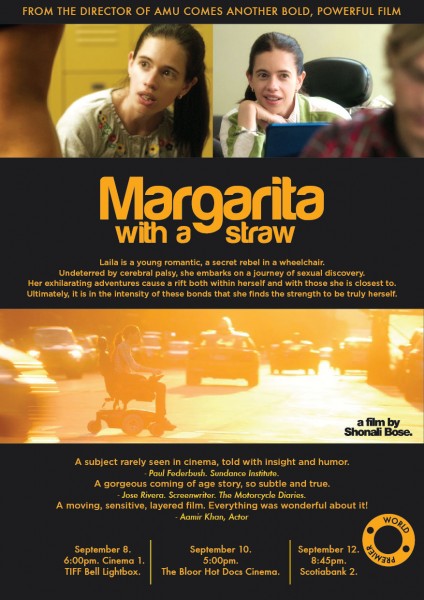 completed a new feature film called Margarita, with a Straw. Premiering next week at the Toronto International Film Festival, the film is a coming of age love story about a part-Sikh college student from Delhi named Laila who has cerebral palsy.
completed a new feature film called Margarita, with a Straw. Premiering next week at the Toronto International Film Festival, the film is a coming of age love story about a part-Sikh college student from Delhi named Laila who has cerebral palsy.
Given the popularity of Amu in the Sikh community, I wanted to interview Shonali about her new film, which explores equally important issues to those brought up in Amu—disability and sexuality among them. Read on for the full interview, and check out the trailer here.
What inspired you to make Margarita, with a Straw?
This my second film, which is inspired by my cousin sister Malini who has acute cerebral palsy. That’s a condition where the part of your brain that controls your motor skills is damaged at birth. But your emotional and intellectual abilities are intact. When I was 40 and Malini was 39, I asked her, what are we going to do for your 40th? It’s absolutely the best birthday. Her speech is usually garbled and difficult to understand. But sometimes when she is angry or excited – it comes out crystal clear. This was one of those times. She banged her fist on the table and spoke loud and clear: I just want to have sex by the time I’m 40! I grinned sheepishly and assured her it was not what it was made out to be, etc. But later when I was thinking about what she said, what she so passionately wanted – I realized that I had never thought about her sexuality much. Or maybe I just avoided it as I didn’t know what to do about it. This started me on my journey of Margarita.
As I started exploring my fictional character and her issues, the big question that came up was one of self worth. This is a core issue that everyone faces, whether one is disabled or not. From there it went to a place of finding deep self acceptance and self love.
I loved your first film, Amu, which powerfully highlighted the anti-Sikh pograms of 1984 through the eyes of a young Sikh woman. The main character in your new film is also a Sikh woman. Where does your interest in telling “Sikh stories” come from?
I don’t see them as Sikh stories at all. The 1984 genocide is a watershed in the entire subcontinent. Like Partition. I made a film about it because no one had and it was covered up. And this history had to get out. To me, this is not a Sikh issue. It’s an Indian issue. Thousands of innocent people being killed in the capital city in broad daylight, organized by those in power—30 years later justice still not delivered. Every justice loving Indian—every Indian who cares about right and wrong and about their country—should be as bothered by this issue as those who were made victims. That was the aim of Amu. In fact, the leads are all Bengalis. It’s only in the end that the lead protagonist, raised as a Hindu Bengali, finds out that she is Sikh and wears a kara.
When I was making Amu, the son of one of my investors—Bhajneet Singh Malik—told me that he was bothered by the fact that Sikhs are only shown as victims, terrorists, or buffoons in films. That remark stayed with me. It’s a fact. When I started creating characters for Margarita and was thinking of the father’s role, I thought it would be nice if I made him Sikh. As a tribute to Amu. To the community that has given me so much love and support on my first film. Balraj Kapoor is an ordinary middle class father. He also happens to be Sikh. He had a love marriage and married his college mate who is Maharashtrian. The actor playing this role was actually little Amu’s father who got killed in Amu.
Bhajneet also said that he hated when Sikhs were played by non-Sikhs who put a turban on. So it was very important to me once I made this decision to cast a real Sikh. My lead protagonist in Margarita is the daughter of this man, Laila Kapoor. She is half Punjabi, half Maharashtrian. Half Hindu. Half Sikh.
Guest blogged by Shahe Kaur

 On June 27, 2014, Punjab 1984, directed by Anurag Singh, was released by White Hill Production and Basic Brothers Productions. Kirron Kher and Diljit Dosanjh play the starring roles in the film as mother and son. This is not the first movie released which discusses issues related to the events of 1984, and hopefully it will not be the last. Like those movies before it, this movie has evoked mixed reactions from its audience.
Many Sikhs have criticized the movie with claims that it distorts facts and is nothing but State propaganda that negatively portrays Sikhs. However, It is important to watch these movies without preconceived notions so that we don’t read our own personal bias into the message.
The film is not meant to be a film about the Khalistan Movement nor is it meant to be a historical documentary. In an interview with Anurag Singh, he states that the film was intended to paint the picture of a mother’s udeek for her son and the struggles and atrocities she had to endure at the hands of law enforcement when inquiring about her son’s whereabouts. This is the first time that this subject has been discussed in a movie from the point of view of a mother. Women are often left out of discussions about ’84, even though it is widely known that many Sikh women were attacked, tortured, and raped, often in front of their families. Rape was used as a weapon of war (as it often is), and many of the victims and their families remain silent today out of the misplaced shame that is associated with those atrocities.
The film showed the main character, like many Sikhs who joined the movement, taking up arms because of his family’s tragic circumstances, corrupt law enforcement, and a government that did not provide him with any other alternative. The film truthfully illustrated how local police officers engaged in lodging falsified evidence against innocent Sikhs, incarcerating them, and then later shooting them in “encounters†where officers falsely claim that those Sikhs tried to escape from custody. Instead of enforcing laws to protect those who were being oppressed, law enforcement protected the oppressors and increased persecution of Sikhs to gain promotions and preserve their own self-interests. It also showed Sikh revolutionaries reciting Waheguru’s prayers and standing against attacks on innocent civilians.
Guest blog by:Â Jaspinder Singh
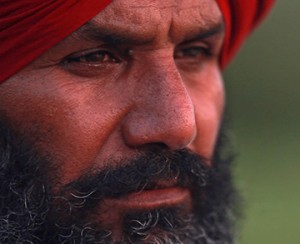 On the 23th of May 2014, Ensaaf will be releasing their documentary, ‘The Last Killing’ to the general public. It is an outstanding and powerful 20 minute film, showing the resolve of Sikhs who have faced indescribable hardships and terror, on their journey to bring to justice those who had destroyed their families.
On the 23th of May 2014, Ensaaf will be releasing their documentary, ‘The Last Killing’ to the general public. It is an outstanding and powerful 20 minute film, showing the resolve of Sikhs who have faced indescribable hardships and terror, on their journey to bring to justice those who had destroyed their families.
The period under scrutiny is Punjab, India (1984-1995) where the Police had free reign to crack down on Sikhs campaigning for equal social, economic and religious rights. By systematically killing and torturing Sikhs they aimed to break the morale of activists and suppress the movement.
The documentary itself centres around Satwant Singh Manak, who, as a police officer, witnessed the unlawful killings of 15 innocent men by the hands of his colleagues. After seeing a 16 year old individual being beheaded and dumped in a canal, he raised his voice against his seniors. The result was for the Punjab Police force to begin a campaign of terror on Manak and his family. At first, Satwant Singh was held and brutally tortured for 42 days. Upon release he resigned from the Police force and filed an official case. The Police authorities responded with another savage attempt to silence him and this time it was his father who was picked up and tortured. Shortly after being released he died from the injuries sustained.
Despite this terrible ordeal, Manak persisted to fight the case of 10 of those victims and the film narrates this struggle, with the help of testimonials from key individuals involved.
It poignantly brings to life the statistics we have always read about and shows profoundly how the horrors of Punjab between the 80s and 90s is not an historic event but an everyday nightmare for all of those families who had seen their loved ones kidnapped or killed.
The director, Satinder Kaur, has captured the mood of Satwant Singh Manak’s story eloquently, where the viewer can intrinsically relate to the feelings and emotions of those deeply affected by the atrocities. The cinematography and editing is superb throughout which is befitting of the important message it is presenting.
I watched this documentary for the second time with my parents ahead of writing this review. As we discussed the film after it had finished, they began to reveal how we had also lost relations in Punjab in suspect circumstances. Between them, they concluded that at least 3 relatives had been killed or disappeared illegally by Punjab Police. This was something I had not known before.
It is in this context that I can see how powerful this film can be for our community. It will awaken us to come to terms with our past and inspire us to become like Manak, not intimidated but steadfast in our determination to prosecute those who ripped families apart and left them languishing in silence.
To conclude, there have only been a small number of occasions in the last decade where I feel the Sikh community has been able to adequately portray the deep sense of injustice felt towards the Indian authorities using media. This production from Ensaaf is by far one of the most courageous documentaries I have seen. I wholeheartedly recommend that everyone takes the time out to watch it and personally takes responsibility in making sure the brave voice of Satwant Singh Manak resonates in our community. Thank you to Ensaaf for their tremendous work.
BREAKING NEWS: The Sikh Art and Film Foundation has responded by including a female speaker in next week’s Leadership Summit!!! Great progress. Â Yet, the lack of representation of women and girls from 2004 – 2012 in the film festivals and galas still needs to be addressed, and this is a community wide issue. Â See below for actionable solutions.
Via Email:
November 15, 2013 7:43PM Nina Chanpreet Kaur,
Dear Sikh Art and Film Foundation,
I am very glad to see that Rashmy Chatterjee will be speaking at next Friday’s Leadership Summit.  This is a tremendous gain for our community as most of the speakers at the summit have been men since 2011.  This represents a trend in many Sikh organizations I hope we can change together. As a Sikh woman and resident of NYC for the last 11 years, I have followed your organization since it’s inception.  Over the years, I have attended many of your events and have been so inspired by the films, speakers and attendees.  I have also noticed the lack of representation of women and girls in your programs.  Though you took a step forward this week, I believe you could be doing more to address, highlight and celebrate the challenges and triumphs of Sikh women and girls whether in your Film Festival, Heritage Gala or Leadership Summit.
I understand that your goal is to transcend the dichotomies and binaries of gender and other categories to sustain the universality and equality that our Gurus envisioned in order to promote and preserve Sikh and Punjabi heritage. Â I share your vision and do not condone a gender binary or bias towards either men or women. Â I am also aware that you face limitations as all organizations do, in particular that you must base the selections of films on the submissions you receive. Â However, Sikh men and boys have been a central part of your programs in a way Sikh women and girls have not and this indicates a bias – whether intentional or not.
From 2007 to 2012, none of your Gala awards for Leadership and Vision have been presented to Sikh women. Â In fact, the only women who received awards were for Creativity/Art with the exception of Shonali Bose who received an award for Courage and Shelley Rubin who received an award for Leadership jointly with her husband. Â For 5 years in a row you have only presented Sikh women with awards for Creativity/Art and no other category. Â As a Sikh woman, this sends a message to me and the next generation of Kaurs that women can be honored for creativity and art but not for leadership and vision. Â It raises questions about your beliefs and assumptions related to gender roles and women’s capacities in relation to men. Â This is most certainly not the message young Kaurs should be receiving, nor do I think this is your intention based on the email I received from Ravi last week. Â Â Â Â (more…)
 There are only a few days left in the annual SikhNet Youth Online Film Festival. Â This year’s theme, “onKaur: Focusing the Lens on Women”, brings together a collection of 18 films by and about Sikh women. Â The films look at the idea of “Kaur”, what that means and how it can be represented in film.
There are only a few days left in the annual SikhNet Youth Online Film Festival. Â This year’s theme, “onKaur: Focusing the Lens on Women”, brings together a collection of 18 films by and about Sikh women. Â The films look at the idea of “Kaur”, what that means and how it can be represented in film.
The films have been categorized as documentary (“think”) and drama (“cry”) with issues including: Anand Karaj, bullying, hair, health issues of Panjab, gender justice, family, and gatka among others.
The film festival is important for several reasons and this year’s theme brings to light the need to include Sikh women’s voices in conversations around identity and community. Â It’s a valuable way of showcasing issues affecting Sikh women.
Here’s how to view and vote:
The film festival also provides a platform for young filmmakers to showcase their films to a wider audience.
1. View the documentary films here and vote via Facebook.
2. View the drama films here and vote via Facebook.
Voting ends on October 9th.

Christina Antonakos-Wallace, filmmaker of with WINGS and ROOTS
Christina Antonakos-Wallace is the filmmaker behind with WINGS and ROOTS, a 90-minute documentary that tells the stories of five people from different immigrant communities living in New York or Berlin, Germany, who have struggled to shape their identity in various ways.
The film features The Langar Hall’s own Sonny Singh, a Sikh living in New York. Part of his story was featured in the well-received short documentary Article of Faith, spawned from the with WINGS and ROOTS project, that portrays Sonny’s activism around bullying of Sikh school children in New York. Another short film, called Where are you from from? was also produced out of this project.
Below, Christina Antonakos-Wallace discusses the film and provides great insight about its intended message regarding the immigrant experience and the search for identity. You can view the trailer for with WINGS and ROOTS at the end of this post.
This weekend, from Friday to Sunday October 19-21st, the Sikh Studies department at Hofstra University will host ‘Sikhi(sm), Literature and Film,’ a conference on literary and visual cultures in the Sikh tradition, both in Panjab and the Diaspora.
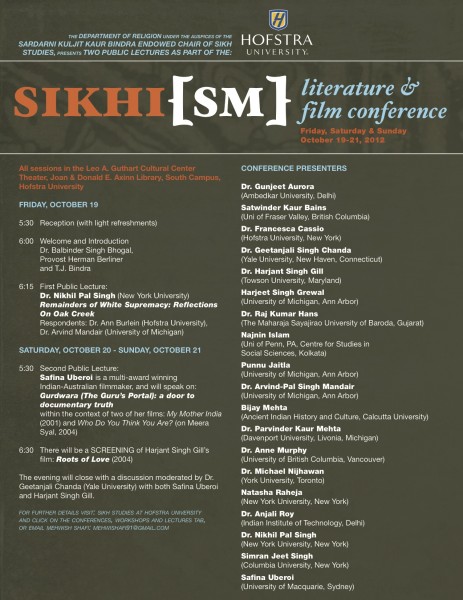 Paper presentations will be given during five sessions, with presentations ranging from de-categorizing the janamsakhis to the poetry of Puran Singh, discourses on secularism to literary representations of Sikhs, Sikh masculine identity vis-à-vis kesh and the dastaar to Panjabi theater, Museum exhibitions to Sikh identity in film and Bollywood, Hip Hop and rap as expressive forms among Panjabi youth to Gurbani sangeet and female kirtaniya. Presentation topics and bios can be accessed via the Sikh Studies website at Hofstra.
Paper presentations will be given during five sessions, with presentations ranging from de-categorizing the janamsakhis to the poetry of Puran Singh, discourses on secularism to literary representations of Sikhs, Sikh masculine identity vis-à-vis kesh and the dastaar to Panjabi theater, Museum exhibitions to Sikh identity in film and Bollywood, Hip Hop and rap as expressive forms among Panjabi youth to Gurbani sangeet and female kirtaniya. Presentation topics and bios can be accessed via the Sikh Studies website at Hofstra.
This year the conference will also host two supplementary film screenings and offer a forum to deepen the discourse around the recent Oak Creek Massacre. The films include Safina Uberoi’s ‘Gurdwara: the Guru’s Portal: a door to document Truth’ and Harjant Gill’s ‘Roots of Love,’ while the pieces related to Oak Creek include Dr. Nikhil Pal Singh’s ‘Remainders of White Supremacy,’ and Dr. Balbinder Singh Bhogal’s ‘Oak Creek Killings: The Denial of a culture of oppression’ (which can be read online).

“But, when you have a beard, a mustache, it’s like a mask. You can’t see the person’s face. It’s hidden.”
As disagreeable as the words sounded, my friend’s tone was very gentle and civil. It was almost as if he was asking me the question: why bother?
I was a nine-year-old Sikh boy with a little mustache fuzz and a patka (a Sikh boy’s headcovering), speaking with the clean-shaven teenaged Hindu boy next door whom I befriended on this extended trip to India. I would often play games with his younger brother, but with this older brother, our interaction usually took the form of conversations about our different cultures and religions.
His point about hair left me somewhat at a loss. I remember his facial expression after he made his statement – curiously waiting for a response that I would not have.
Later that evening, I presented this argument to my father. “He said people can’t see our true faces because of the hair on our face.”
My father didn’t take a second to respond. “This is my face”, he said very matter-of-factly, “this is how a man’s face naturally looks.”
Oscar nominated director, Ashvin Kumar today offers a free preview of his film on the twenty year military presence in Kashmir, ‘Inshallah, Kashmir: Living Terror,’ a film that documents the treatment of the Kashmiri people at the hands of half a million Indian military troops. The film reveals through personal stories the experience of torture, enforced disappearances, and extrajudicial executions that have swept the region since 1989.
Here’s a short preview:

I found this new video that Mandeep Sethi released last month beautiful and inspiring. Shot in London, the young San Francisco-based hip hop artist links up with a dhadi jatha for a freestyle session unlike any other.
I’ve always loved the power, poignancy, and rhythm funkyness of dhadi jathas. Sikh and Punjabi public education through music, in a sense. These same characteristics are at the heart of hip hop and draw many of us to it, including talented artists like Mandeep. As Public Enemy’s Chuck D stated years ago, “Rap is CNN for black people.”
A few years ago, a friend of mine gave a compelling presentation about the parallels between hip hop and dhadi at SikhRI’s Sidak program in San Antonio, TX. Mandeep Sethi was not in the room, but clearly he had the same thought. Hope you enjoy it.

It’s that time of year again!
For those Southern California natives, you (hopefully) know it rolls around once every year. This year, SikhLens is proud to announce its annual Sikh Arts and Film Festival to be held November 18th – 20th, 2011 at the prestigious Dodge College of Film and Media Arts at Chapman University in Orange, California. As avid supporters of Sikh Arts, and creativity in general, I am hoping our readers would be especially interested in this event coming up in the next couple of weeks.

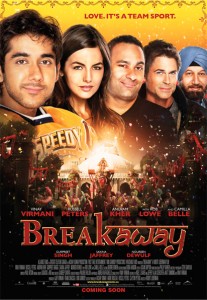 The Sikh Arts and Film Festival serves as a central venue for artists to showcase and share Sikh heritage and culturethrough the mediums of film, literature, art, music, social media and fashion. As an often-misidentified minority, this type of forum has proven to be essential for Sikhs to transcend cultural boundaries, generate awareness, and connect with the broader community.
The Sikh Arts and Film Festival serves as a central venue for artists to showcase and share Sikh heritage and culturethrough the mediums of film, literature, art, music, social media and fashion. As an often-misidentified minority, this type of forum has proven to be essential for Sikhs to transcend cultural boundaries, generate awareness, and connect with the broader community.
For tickets, scheduling and more information, visit www.sikhlens.com.
While Breakaway/SpeedySinghs seems to be the talk of the town, earlier this week, a friend (pagh salute: download!) pointed this new movie to me. It seems it is still in production and is a labor of love for Sikh-Australian, Rupinder Singh. On the internet there are few details about the movie.
Here is their description:
Visionary film by Rupinder Singh creating an original epic docu-feature based on some prominent events in Sikh history. The film takes the audiences to a thrilling journey where they learn about the difficult time on the Sikh community and about how they still came out victorious in spite of being tested by the time.
Labeled as a “docu-drama” the breath-taking views and professional camera pans seem like a quality production. Although I have some reservations with the period costumes, despite claims on the website for a “special emphasis” [note the contemporary Nihang weaponry and costume and contrast with the historical reconstruction – though it has been alleged to be Afghan – at the London exhibit], I will definitely go out and watch it. In fact, I just made a contribution!
Make a contribution, “like” their facebook page, check out their website, or just watch their trailer.

Each year, SikhNet hosts an online youth film festival – to cultivate interest from Sikh filmmakers from around the globe. The online film festival is an excellent way for individuals to dialogue about issues affecting us personally and as a community. One of the films, titled Khalsa Has No Gender, is made by a group of young teen-aged Sikh women living in England and the goal of the film is to address gender [in]equality within our community. The film was striking to me for several reasons. Firstly, that these young women chose to use the medium of film to discuss this very important issue and secondly, that the concept of gender discrimination and inequality is prevalent in the conscience of very young Sikhs – Sikhs who are perhaps even 3rd and 4th generational living in the disapora.
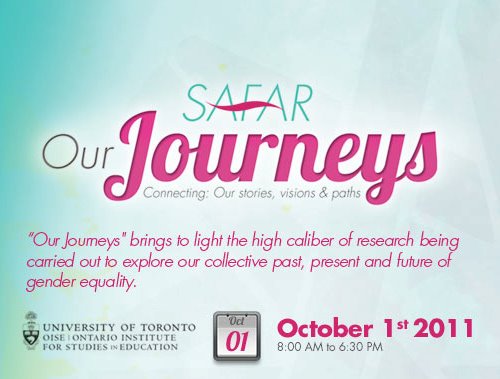 While on one hand it’s disheartening to acknowledge that perhaps change is slower than we have hoped it to be (displayed by the film), there is – on the other hand – reason to be optimistic. In just over a week, scholars and community members from across the globe are gathering in Toronto for the very first Sikh Feminist Conference, “Our Journeys”, hosted by the Sikh Feminist Research Institute (SAFAR).
While on one hand it’s disheartening to acknowledge that perhaps change is slower than we have hoped it to be (displayed by the film), there is – on the other hand – reason to be optimistic. In just over a week, scholars and community members from across the globe are gathering in Toronto for the very first Sikh Feminist Conference, “Our Journeys”, hosted by the Sikh Feminist Research Institute (SAFAR).
[Our Journeys is] an opportunity for scholars and community members alike to openly connect, converse and engage in a dialogue and critical thinking about gender related issues that demand to be voiced, and heard, in order to be addressed.
The line up of topics and speakers is remarkable. The keynote speaker, Professor Nikky-Guninder Kaur Singh is well known for introducing the term “Sikh feminism” and will share a Panel with Geetanjali Singh Chanda and Mallika Kaur to explore how Sikh feminism is defined, its origins, the present-day reality and how it can be an impetus for social change.
Embracing my new role as a proud Chacha, I recently bought some Sikhi-related children’s books for my niece for her first birthday. I was especially excited about this new book and CD of Sikh nursery rhymes called Ik Chota Bacha. The book/CD is a great way to teach basic Sikh values to kids and help develop their Punjabi skills (all the nursery rhymes are in Punjabi) in a fun way. I played the CD for my niece on the daily when I was visiting for her birthday, and by the end of the week, the whole family was singing along to some of the catchy (and rather cheesy) tunes. (See a full review of the book here.)
My excitement about the release Ik Chota Bacha quickly became muddied with disappointment and frustration once I saw the book’s illustrations. Every single Sikh child and adult depicted in the book looks WHITE. I don’t just mean they’re all fair-skinned on the spectrum of brownness. I mean peachy, rosey-cheeked, white.
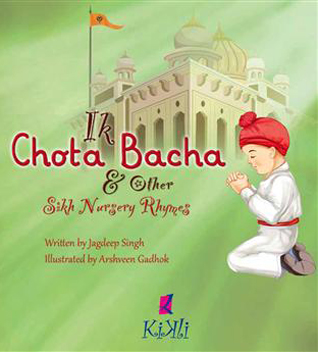
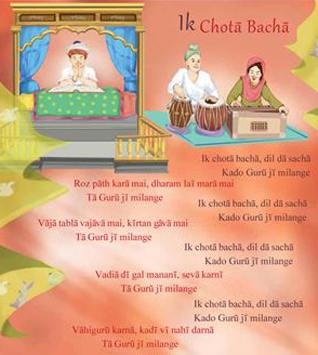
Ummm, take the title, however you like….
While we often rely on Maple Leaf Sikh to keep us up to date on the happenings in the land up North (Canada!!), this information is brought to you (and us) by another (pagh salute: JusReign).
While Russell Peters needs no introduction in the diaspora due to his comedic talents, those of us a little bit older remember him from his DJ days during the modern birth of contemporary bhangra music.
Here he comes in an interesting new movie, Breakaway. It seems everyone’s favorite (well, not mine – Bhagwant Mann gets that title) Gurpreet Ghuggi will have a role. Do you think you’ll go watch Breakaway?

Earlier this week I went to a screening of the film Koi Sunta Hai, one of four documentaries produced by the Kabir  Project, an expansive music and film project directed by Shabnam Virani.
Project, an expansive music and film project directed by Shabnam Virani.
In their own words:
The Kabir project brings together the experiences of a series of ongoing journeys in quest of this 15th century North Indian mystic poet in our contemporary worlds. Started in 2003, these journeys inquire into the spiritual and socio-political resonances of Kabir’s poetry through songs, images and conversations.
We journey through a stunning diversity of social, religious and musical traditions which Kabir inhabits, exploring how his poetry intersects with ideas of cultural identity, secularism, nationalism, religion, death, impermanence, folk and oral knowledge systems.
I first learned about The Kabir Project a couple of years ago when they did a screening several clips from the films in Jackson Heights, Queens and featured a stirring performance by folk musician Prahlad Tipaniya, who is featured in the films. I was deeply moved and inspired by the films’ (and musicians’) explorations of Bhagat Kabir’s bani, and especially by the way the filmmaker and artists highlight the Kabir’s powerful message in the face of of contemporary manifestations of sectarian violence, caste oppression, and religious and national tensions in South Asia.
I was inspired again this week in watching Koi Sunta Hai, which highlights the Kabir-oriented journey of classical musician Kumar Gandharva. Kumarji, as he is referred to with admiration in the film, was a child prodigy classical Hindustani singer who developed an illness (the film says TB, Wikipedia says lung cancer) as a young man that forced him to not sing a note for five years. In that time of his world being turned upside down and his profession and main form of expression indefinitely at a halt, he began to hear singers from very non-classically trained backgrounds — folk singers, “common” people — singing the poetry of Kabir. This began to change his entire approach to music, spirituality, and life. The below clip from the film explains more about Kabir’s poetry and Kumarji’s relationship to it.
As a continuation of the conversation initiated by Navdeep’s post “Fatting it Up at the Langar Hall,” I want to share this the trailer for Soul Food Junkies, a film-in-progress directed by African American filmmaker and activist Byron Hurt.

The parallels to the challenges we face in the Punjabi community were striking to me as I watched the trailer. Obesity and diabetes are epidemics in the African American community, just as they are in our community, both in Punjab and the diaspora. And there is no doubt of the central role that diet plays for us all.
Conversations about hair are often emotional for Sikhs – and therefore they are conversations which we tend to avoid. For many Sikhs, it is a constant struggle to explain the historical significance of keeping our hair and/or wearing a turban while other Sikhs will argue that simply keeping your hair or wearing a turban by no means makes you a good Sikh. While that may be true, being able to have conversations about hair is an incredibly important and necessary dialogue for us to participate in. Many Sikhs in the diaspora have struggled to maintain their identity, while Sikhs in Panjab are struggling to be western. It’s such an interesting juxtaposition and anybody who has visited Panjab recently will see the dwindling number of Sikh boys choosing to wear turbans. In an effort to explore this issue, a fascinating documentary film – Roots of Love – by award winning filmmaker Harjant Gill is being released this Spring.
Told through the stories of six different men ranging in age from fourteen to eighty-six, Roots of Love documents the changing significance of hair and the turban among Sikhs in India. We see younger Sikh men abandoning their hair and turban to follow the current fashion trends, while the older generation struggles to retain the visible symbols of their religious identity. The choice of cutting one’s hair is one that not only concerns the individual and his family, but an entire community. [link]
I was given the opportunity to watch the entire documentary – I highly recommend the film and was drawn to its excellent cinematography. You can watch the trailer below and after the jump, read my interview with Director, Harjant Gill. Then, think about how hair plays a significant role in your life, if at all?
We have previously written about SikhLens, an art and film festival which brings together Sikh filmmakers, authors, artists and actors. For those of you who support the development of Sikh arts, you will be pleased to know that the second annual Sikh Art and Film Festival (SAFF) will be held from November 19th-21st, 2010 at the Dodge College of Film and Media Arts at Chapman University in Orange, CA. SAFF provides a venue for artists to present their “Sikh-centric” films, art, and music to the broader community with the intent of showcasing their talents and generating increased Sikh awareness.
The Festival begins Friday, November 19th with a red-carpet Opening Night starting at 7:30 pm. A youth-focused cluster will start off the Saturday events. This cluster focuses on films and live book readings intended to incite interest and inspire youth, while teaching about Sikh history. The focus then turns to creative Sikhs in the Visual, Audio and Entertainment Industries. Hear their stories, watch and listen to their craft, and interact with and support Sikhs breaking ground in these unique areas. Also introducing for the first time an interactive segment on “Introduction to Film-making,”to demystify the film-making process. Rounding out the day’s events are a series of short films featuring a wide variety of genres, an eclectic mix of filmmakers, and a unique blend of topics, including special selections from the SikhNet Youth Online Film Festival. Sunday’s events start with an international flavor, with an emphasis on Sikh films and artists from all over the world. The concluding cluster of the festival will touch upon Social Issues within the Sikh Diaspora. This segment is aimed to bring upon a meaningful and insightful look into the surroundings of the Sikh Community today.
I am especially interested in this final cluster which brings together films addressing the social issues that inflict our community. We have spoken many times on this blog about how media and film are critical to dialoguing about important issues.
A new film, by Turbanology filmmaker Jay Singh-Sohal, discusses the presence of Sikhs in the World Wars. Sikhs at War is a free online educational short-film exploring one young person’s journey to discover the invaluable contribution made by his community during the First World War. This documentary has been made specifically with young people in mind. Educators can use the film as a resource to find out more about Sikhs who fought during both World Wars for Great Britain.
From their simple village life in the Panjab regions of modern day India and Pakistan, the Sikhs volunteered in their thousands to fight for Britain. During the Great War their numbers rose from 35,000 at the beginning of 1915 after the crisis in Europe turned into War, to more than 100,000 who were in active service by the time it ended in 1918.
The Sikhs formed 20% of the British Indian Army in action despite being only 2% of the population of India. They fought on all fronts in Europe, from Turkey and in Africa to the fields of Flanders. Their bravery is legendary – of the 22 Military Crosses awarded for conspicuous gallantry to Indians during the conflict 14 were rewarded to Sikh soldiers.
But for the thousands that left their homelands to join the fighting many did not return. During both the Great War (1914-18) and World War Two (1939-45) Sikh soldiers killed in action numbered 83,005 with 109,045 more wounded. One again despite being a minority in British India.


